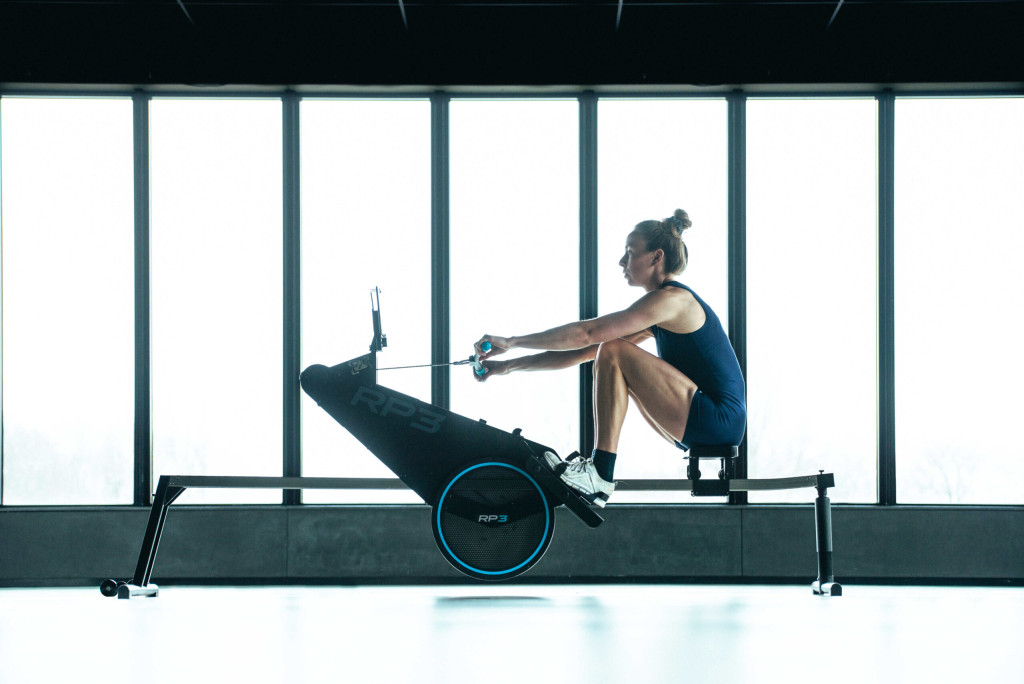Best low-impact cardio options for home
Discover 5 effective low-impact cardio options for home workouts that protect your joints while boosting fitness. Transform your health journey with these sustainable exercises for
Stepping onto a rowing machine for the first time can be both exciting and intimidating. But with the right approach, indoor rowing offers one of the most rewarding full-body workouts available. Whether you’re looking to build fitness, lose weight, or simply add variety to your exercise routine, a structured rowing plan can help you achieve consistent progress while minimizing the learning curve. This 3-day beginner routine will guide you through your first weeks on an indoor rowing machine, focusing on proper technique, endurance building, and appropriate intensity levels. As with any new exercise program, we recommend consulting with your doctor before beginning, especially if you have existing health conditions or injuries.
Indoor rowing stands out as an ideal starting point for fitness newcomers for several compelling reasons. First, it’s a low-impact exercise that puts minimal stress on your joints while still delivering impressive results. Unlike running or jumping exercises that can be hard on knees and ankles, rowing allows you to work intensely without the pounding.
What makes rowing truly special is that it engages approximately 85% of your muscles during each stroke. Your legs push, your core stabilizes, and your arms pull—creating a comprehensive workout that builds strength throughout your body. This full-body engagement also makes rowing an efficient calorie-burner, helping you make the most of limited workout time.
For beginners specifically, rowing offers a rare combination of being accessible yet challenging. You can start with light resistance and slow strokes, gradually building both as your fitness improves. The movement pattern is straightforward to learn but offers room for technical refinement as you progress, making it engaging for the long term.
Before you begin any rowing session, proper preparation is essential for both safety and effectiveness. Start by adjusting the foot straps so your feet feel secure but not uncomfortably tight. Your feet should be positioned with the straps crossing over the widest part of your foot.
For beginners, we recommend setting your damper (the resistance control) between 3-5. Many newcomers mistakenly crank the resistance too high, thinking it provides a better workout. In reality, a moderate damper setting allows you to focus on technique while still getting an effective workout.
Your pre-rowing warm-up should include:
Dynamic rowing machines, which allow the seat and footrest to move together (mimicking the feel of a boat), provide the most realistic rowing experience and can reduce stress on your lower back. If you’re using a static machine, be particularly mindful of your technique to avoid unnecessary strain.
Your first day is all about learning the fundamentals while getting comfortable on the machine. The focus is on mastering proper form rather than distance or speed.
Begin with a 5-minute warm-up at very light intensity, practicing the basic stroke sequence: legs-core-arms on the drive (pulling) phase, then arms-core-legs on the recovery (returning) phase.
| Session Component | Duration/Distance | Focus Points |
|---|---|---|
| Warm-up | 5 minutes | Very light intensity, practice basics |
| Technique Intervals | 10 × 1 minute rowing with 1 minute rest | Focus on one element per interval (leg drive, body swing, arm pull) |
| Light Continuous Rowing | 5-10 minutes | Putting it all together at comfortable pace |
| Cool Down | 3-5 minutes | Very light rowing and stretching |
During your technique intervals, maintain a stroke rate of 18-20 strokes per minute. This slower cadence gives you time to think about each phase of the stroke. Remember that approximately 60% of your power should come from your legs, 30% from your core, and just 10% from your arms.
After focusing on technique in your first session, Day 2 shifts toward building basic endurance. This workout introduces longer periods of continuous rowing at a sustainable pace.
Begin with your standard 5-minute warm-up, gradually increasing intensity. Then move into the main session: steady-state rowing at a moderate intensity where you could still hold a conversation, but wouldn’t want to chat for long.
Main workout: 3 × 5 minutes of continuous rowing with 2 minutes of rest between each interval. Focus on maintaining consistent form throughout each 5-minute segment. Your stroke rate should remain between 20-24 strokes per minute.
Throughout this session, perform technique checks every minute:
Finish with a 5-minute cool-down of very light rowing followed by stretching, focusing particularly on your legs and lower back.
Your final day introduces simple interval training, which helps improve both cardiovascular fitness and power production. Even as a beginner, intervals can be adapted to your current fitness level by adjusting intensity rather than changing the structure.
After your warm-up, you’ll perform a pyramid interval structure, gradually increasing interval length, then decreasing back down:
Main workout:
The “moderate effort” intervals should feel challenging but sustainable—around 60-70% of your maximum effort. During recovery periods, continue rowing with very light pressure just to keep moving.
Focus on maintaining good technique even as fatigue builds during the longer intervals. This is excellent practice for developing the mental focus needed for longer rowing sessions in the future.
As you follow this 3-day routine, be mindful of these frequent beginner errors:
Rowing with the arms first instead of initiating with the legs. Remember the sequence: legs-core-arms for the drive. When you pull with your arms first, you miss out on the powerful leg press that generates most of your stroke power.
Setting resistance too high is another common issue. While it might seem that higher resistance equals a better workout, rowing effectively is about technique and rhythm more than fighting against heavy resistance. A moderate damper setting allows for better form and reduced injury risk.
Hunching forward at the catch position (the beginning of the stroke) can strain your lower back unnecessarily. Maintain a slight forward lean from the hips while keeping your back straight.
Many beginners also rush the recovery phase. Remember that the recovery should take twice as long as the drive—this gives you time to prepare for the next stroke and helps establish a sustainable rhythm.
While metrics like distance, speed, and power are useful indicators of progress, beginners should look beyond these numbers to assess improvement. Technical refinement is often a more important form of progress in your early rowing journey.
Pay attention to how your body feels during and after rowing sessions. Are movements becoming more fluid? Does your breathing feel more controlled? Are you experiencing less discomfort in your lower back or wrists? These qualitative improvements often precede quantitative ones.
Energy levels and recovery quality are also telling indicators. As your body adapts to rowing, you should notice better stamina during workouts and quicker recovery afterward. You might find yourself less exhausted by the end of sessions that previously left you depleted.
Consider keeping a simple workout journal to track these subjective measures alongside your objective metrics, creating a more complete picture of your progress.
This 3-day routine provides an excellent foundation, but after 3-4 weeks, you’ll be ready for progressive adjustments to continue improving. Here’s how to modify the plan as you advance:
Increase duration before intensity. Add 5-10 minutes to your steady-state sessions before pushing harder. Building aerobic endurance creates a foundation for more intense work later.
Gradually raise the stroke rate on your technique days, working from 18-20 up to 22-24 strokes per minute while maintaining proper form. Higher rates require more technical precision, making this a natural progression.
For interval sessions, try decreasing recovery time or adding one more round of the pyramid structure. These small adjustments provide just enough additional challenge without overwhelming your developing skills.
As your technique becomes consistent, begin experimenting with different workout structures. Try a longer steady-state session one day, or perhaps a session of shorter, more intense intervals.
At RP3 Rowing, we understand that proper progression is key to developing as a rower. Our dynamic indoor rowing machines are designed to grow with you from beginner to advanced levels, providing real-time feedback that helps you refine your technique as you progress. Understanding the science of rowing can significantly improve your performance both on the machine and on the water. Remember that consistency trumps intensity, especially in these early stages—your body adapts best to regular, moderate challenges rather than occasional maximum efforts.
If you’re interested in learning more about the benefits of rowing, reach out to our team of experts today.
Discover 5 effective low-impact cardio options for home workouts that protect your joints while boosting fitness. Transform your health journey with these sustainable exercises for
Discover 5 effective low-impact exercises that protect your back while maintaining fitness intensity. Learn proper form techniques to strengthen your spine without risking injury.
Discover 5 effective home workouts that build strength without stressing your joints. Learn fluid movement techniques for pain-free exercise that delivers results while protecting your
Discover effective low-impact fitness strategies that build strength and cardio health without damaging your joints. Learn sustainable workout techniques for long-term health and injury prevention.
Discover 5 effective full-body low-impact workouts perfect for beginners that protect your joints while building strength and fitness. Start your sustainable exercise journey today!
Discover how low-impact fitness creates sustainable health benefits without joint pain. Learn 5 full-body workouts that deliver results while preserving your body for decades of
Discover why low-impact workouts deliver powerful fitness results without joint damage. Learn 6 key benefits and find the perfect exercise for sustainable daily fitness that
Discover why low-impact training on recovery days accelerates muscle repair, prevents injuries, and boosts long-term fitness gains. Learn optimal activities and avoid common recovery mistakes.
Discover why rowing machines deliver a complete workout while protecting your joints. Engage 85% of your muscles with zero impact stress—perfect for fitness enthusiasts of
Discover effective low-impact exercises perfect for returning to fitness after breaks or injuries. Learn 5 joint-friendly workouts that rebuild strength while preventing setbacks on your
Discover 5 low-impact routines that challenge your entire body without stressing your joints. Build strength and burn calories while protecting your knees, hips, and spine.
Discover how rowing uniquely engages 85% of your muscles while enhancing flexibility in one efficient workout. Build strength and mobility simultaneously without stressing your joints.
Discover how consistent low-impact activity delivers powerful physical and mental benefits without joint stress. Build fitness, reduce stress, and improve mobility through sustainable daily movement
Discover why rowing machines offer the ultimate low-impact, full-body workout for home fitness. Get 85% muscle engagement with minimal joint stress—perfect for all ages and
Discover how low-impact exercise protects your joints while delivering powerful fitness results. Learn 5 joint-friendly workouts that maintain mobility and prevent pain as you age.
Discover how to build sustainable low-impact fitness habits that protect your joints while delivering exceptional results. Learn proven strategies for lifelong exercise consistency without pain.

We will send you a personal quote as soon as possible.
As soon as the quote is ready, you will receive a link by email to order directly.
